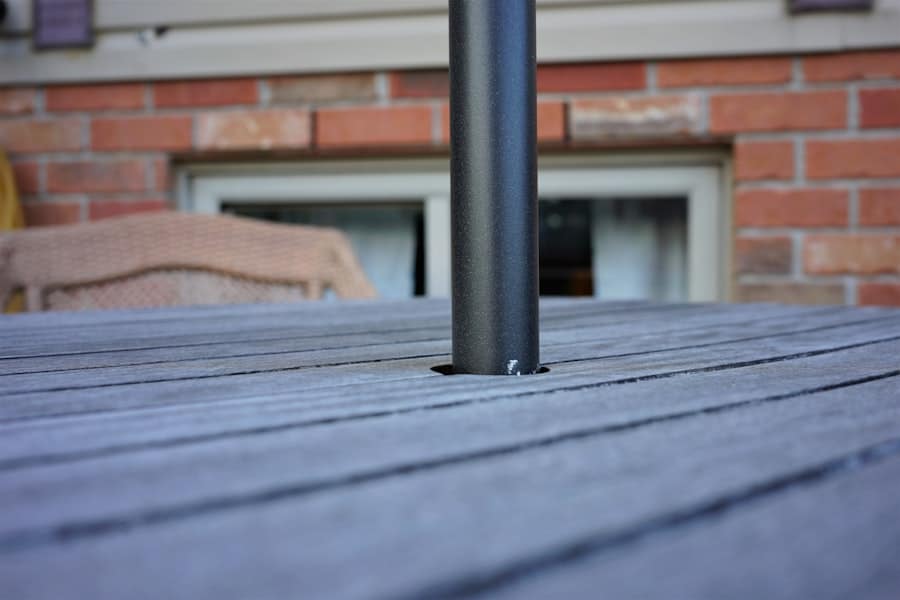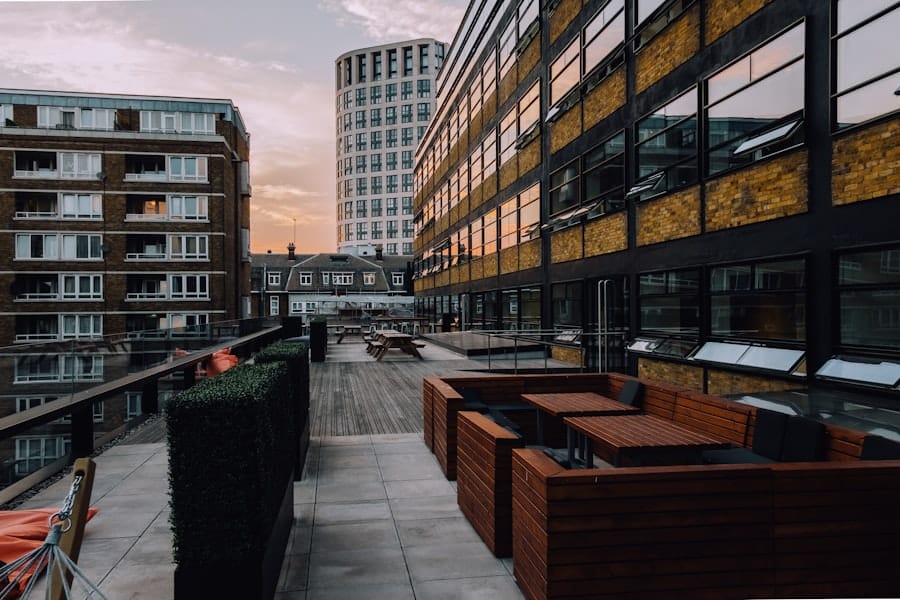When it comes to ensuring safety in construction and landscaping, the proper installation of materials is paramount. You must pay close attention to the specifications and guidelines provided by manufacturers and industry standards. Whether you are working with decking, paving stones, or any other materials, following the recommended installation procedures can significantly reduce the risk of accidents.
For instance, if you are laying down tiles, ensuring that they are level and securely adhered can prevent tripping hazards. You should also consider the environment in which these materials will be installed; factors such as moisture levels and temperature can affect how well materials bond and perform over time. Moreover, the quality of the materials you choose plays a crucial role in safety.
Opting for high-grade materials that are designed to withstand wear and tear can save you from future headaches. You should also be aware of the specific requirements for different types of installations. For example, outdoor surfaces may require different treatments compared to indoor ones to ensure they are safe and durable.
By investing time and effort into the proper installation of materials, you not only enhance safety but also extend the lifespan of your project.
Key Takeaways
- Proper installation of materials is crucial for ensuring the safety and longevity of outdoor spaces.
- Regular inspection and maintenance of outdoor areas is essential to identify and address potential safety hazards.
- The use of non-slip surfaces can help prevent slips and falls, especially in wet or icy conditions.
- Proper drainage systems are important for preventing water accumulation and potential hazards.
- Adequate lighting is necessary for visibility and safety, especially during the evening and nighttime.
Regular Inspection and Maintenance
Proactive Approach to Safety
By being proactive, you can identify potential issues before they become serious problems. For instance, addressing concerns such as cracks in walkways or loose railings promptly can prevent injuries. In addition to visual inspections, consider seasonal maintenance tasks to ensure your installations remain safe.
Seasonal Maintenance Tasks
Weather can take a toll on your installations, so it’s essential to prepare for changes in temperature, moisture, and other environmental factors. For example, during winter, clear snow and ice from walkways to prevent slips and falls. After heavy rains, check drainage systems and ensure they are functioning properly.
A Safer Environment
By committing to regular inspection and maintenance, you create a safer environment for everyone who uses your spaces.
Use of Non-Slip Surfaces

The choice of surface materials can greatly influence safety in any environment. You should prioritize non-slip surfaces, especially in areas prone to moisture or where foot traffic is high. Non-slip surfaces provide better traction, reducing the likelihood of slips and falls.
When selecting materials for walkways, patios, or pool areas, look for options that have been specifically designed with slip resistance in mind. Textured finishes or specialized coatings can enhance grip without compromising aesthetics. In addition to choosing non-slip materials, you should also consider the layout and design of your spaces.
For example, incorporating gentle slopes rather than steep inclines can help maintain stability while walking. Furthermore, you might want to use contrasting colors or patterns to delineate different areas clearly. This visual cue can help individuals navigate spaces more safely, particularly in environments where visibility may be compromised.
By focusing on non-slip surfaces and thoughtful design, you contribute significantly to creating a safer environment.
Proper Drainage Systems
Effective drainage systems are critical for maintaining safety in outdoor spaces. You need to ensure that water is directed away from walkways and structures to prevent pooling and flooding. Standing water not only creates slippery conditions but can also lead to structural damage over time.
When designing drainage systems, consider factors such as soil type, landscape grading, and local weather patterns. Implementing features like French drains or surface drains can help manage water flow effectively. Additionally, regular maintenance of drainage systems is essential to ensure they function properly.
You should routinely check for blockages caused by debris or sediment buildup that could impede water flow. Clearing these obstructions promptly can prevent water accumulation and reduce the risk of accidents. By prioritizing proper drainage systems in your projects, you create a safer environment that minimizes hazards associated with water-related issues.
Lighting for Visibility
Adequate lighting is a fundamental aspect of safety that should never be overlooked. You must ensure that all areas are well-lit to enhance visibility during both day and night. Poor lighting can lead to accidents as individuals may struggle to see obstacles or changes in elevation.
When planning your lighting layout, consider using a combination of ambient, task, and accent lighting to create a well-lit environment that caters to various needs. Moreover, you should pay attention to the placement of light fixtures. Positioning lights at strategic points can illuminate pathways, entrances, and other critical areas effectively.
Additionally, using motion-sensor lights can enhance safety by providing illumination only when needed while conserving energy during periods of inactivity. By investing in proper lighting solutions, you significantly improve visibility and reduce the likelihood of accidents occurring due to poor sightlines.
Clearing of Debris and Obstacles

A clean environment is essential for maintaining safety in any space. You need to make it a priority to regularly clear debris and obstacles from walkways, driveways, and other high-traffic areas. Items such as leaves, branches, or construction materials can create tripping hazards that may lead to injuries.
Establishing a routine for debris removal not only enhances safety but also contributes to the overall aesthetic appeal of your surroundings. In addition to regular cleaning, you should also educate those who use the space about the importance of keeping areas clear. Encouraging individuals to report any hazards they encounter can foster a culture of safety within your community or organization.
By actively promoting the clearing of debris and obstacles, you create an environment where everyone feels responsible for maintaining safety.
Use of Secure Edging
Secure edging is another critical element in ensuring safety around walkways and landscaped areas. You must ensure that any borders or edges are properly installed and maintained to prevent soil erosion or material displacement over time. Edging serves not only as a decorative feature but also as a functional barrier that helps define spaces clearly while preventing accidents.
When selecting edging materials, consider options that are durable and resistant to weathering. You should also ensure that edges are flush with surrounding surfaces to minimize tripping hazards. Regularly inspecting edging for signs of wear or damage is essential; if you notice any issues, address them promptly to maintain a safe environment.
By focusing on secure edging practices, you contribute significantly to the overall safety of your spaces.
Incorporation of Handrails and Guardrails
Handrails and guardrails are vital safety features that should be incorporated into any structure with elevation changes or potential drop-offs. You need to assess areas such as staircases, balconies, and elevated walkways for the necessity of these protective elements. Handrails provide support for individuals navigating stairs or inclines while guardrails serve as barriers against falls from heights.
When installing handrails and guardrails, ensure they meet local building codes regarding height, spacing, and material strength. You should also consider the needs of all users; for instance, handrails should be designed for easy gripping by individuals of varying heights and abilities. Regularly inspecting these features for stability and wear is crucial; if any issues arise, repairs should be made immediately to maintain safety standards.
Consideration of Weather Conditions
Weather conditions play a significant role in safety considerations for any project. You must take into account how different elements—such as rain, snow, ice, or extreme heat—can impact the usability of your spaces. For instance, during winter months, it’s essential to have strategies in place for snow removal and ice prevention on walkways to minimize slip hazards.
Additionally, you should consider how weather conditions affect materials over time. Some surfaces may become slick when wet or may degrade under prolonged exposure to harsh sunlight or moisture. By selecting weather-resistant materials and implementing appropriate maintenance practices based on seasonal changes, you can enhance safety while prolonging the lifespan of your installations.
Compliance with Building Codes and Regulations
Compliance with building codes and regulations is non-negotiable when it comes to safety in construction projects. You need to familiarize yourself with local laws governing construction practices in your area; these regulations are designed to protect public safety and ensure quality standards are met. Failure to comply can result in legal repercussions as well as increased risks for users.
You should also stay updated on any changes in regulations that may affect your projects over time. Engaging with local authorities or industry professionals can provide valuable insights into best practices for compliance. By prioritizing adherence to building codes and regulations, you not only safeguard yourself from potential liabilities but also contribute positively to community safety.
Communication with Clients about Safety Measures
Effective communication with clients regarding safety measures is essential throughout any project lifecycle. You need to ensure that clients understand the importance of implementing safety features and practices within their spaces. This includes discussing potential risks associated with their projects as well as outlining strategies for mitigating those risks.
Moreover, providing clients with clear information about maintenance schedules and inspection protocols fosters a collaborative approach toward safety management. Encouraging open dialogue allows clients to voice concerns or ask questions about safety measures being implemented on their behalf. By prioritizing communication about safety measures with clients, you build trust while promoting a culture of safety that extends beyond individual projects.
In conclusion, prioritizing safety in construction and landscaping requires a multifaceted approach that encompasses proper installation practices, regular maintenance routines, thoughtful design choices like non-slip surfaces and secure edging, effective drainage systems, adequate lighting solutions, proactive debris management strategies, incorporation of protective features like handrails and guardrails while considering weather conditions along with compliance with building codes—all while maintaining open lines of communication with clients about these critical aspects ensures a safer environment for everyone involved.
Landscaping services take various measures to ensure the safety of outdoor features like patios and walkways. One important aspect is proper maintenance and regular inspections to identify any potential hazards. In a related article on landscaping trends, it discusses the importance of incorporating safety features into outdoor designs to prevent accidents and injuries. This includes using slip-resistant materials for walkways, proper lighting for visibility at night, and ensuring proper drainage to prevent water accumulation. By staying up-to-date on landscaping trends and best practices, landscaping services can create beautiful outdoor spaces that are also safe for homeowners and visitors.
FAQs
What measures do landscaping services take to ensure the safety of outdoor features like patios and walkways?
Landscaping services take several measures to ensure the safety of outdoor features like patios and walkways. This includes proper installation, regular maintenance, and the use of non-slip materials.
How do landscaping services ensure the proper installation of outdoor features?
Landscaping services ensure the proper installation of outdoor features by following building codes and regulations, using quality materials, and employing skilled and experienced workers.
What maintenance practices do landscaping services implement to ensure the safety of outdoor features?
Landscaping services implement regular maintenance practices such as cleaning, repairing cracks or damages, and applying sealants to ensure the safety of outdoor features like patios and walkways.
What materials are commonly used by landscaping services to ensure the safety of outdoor features?
Landscaping services commonly use non-slip materials such as textured concrete, pavers, and natural stone to ensure the safety of outdoor features like patios and walkways. These materials provide better traction and reduce the risk of slipping.
